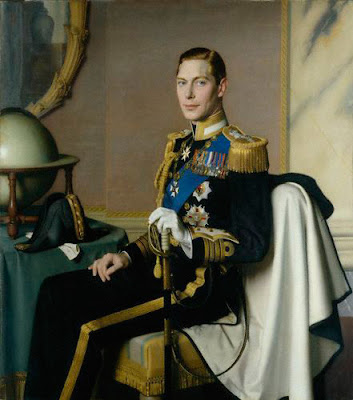 |
|
Death on the Ridge Road, 1935 by Grant Wood. Williams College Museum of Art
|
Occasionally a painting gets stuck in my head. Such is the case with Death on the Ridge Road, by Grant Wood, above. Viewers in 1935 understood this painting as something painfully probable in rural driving: innocent passengers careening happily toward their imminent deaths. One could see it as a metaphor for life, since we’re all in that state of happy ignorance. We are, however, in a new era, and current conventional wisdom is that it is a metaphor for Woods’ own privately tortured sexuality.
That’s a contemporary American viewpoint, however, and it’s unlikely to hold up.
Death on the Ridge Road is currently in London, in
America after the Fall: Paintings in the 1930s, at the Royal Academy of Arts in London. If I find any spare change, I’m going to see it before it closes. It’s not that I can’t or haven’t seen these paintings here in their native home. I’d like to see them interpreted through British eyes.
 |
|
Erosion No. 2 – Mother Earth Laid Bare, 1936, Alexandre Hogue, Philbrook Museum
|
The Telegraph called this show “a pungent mix of American horror stories,” but there’s more than a bit of Schadenfreude there. We Americans don’t necessarily think of urbanization, industrialization, or any of the other themes of the Great Depression as horror stories. They are the stories of our parents and grandparents, repeated down through the generations.
Nor were they the end of an idyllic past, as the title implies. We had been riven by Civil War two generations earlier; we had suffered through rocketing financial depressions before. Ours was a society that was constantly in flux.
It was, however, a “decade like no other,” as the Royal Academy describes it. The impulses in art were varied and many. Painting wandered down many different by-ways, from the regionalism of Wood to the Symbolism of
Philip Evergood, the Precisionism of
Charles Demuth and
Charles Sheeler, the folk expressionism of
William H. Johnson and the modernism of
Georgia O’Keeffe. It was a ferment that we can only begin to sort out in retrospect, and it happened in literature and music along with painting.
 |
|
Gas, 1940, Edward Hopper, MoMa
|
“He’s putting the pump back, he’s staring into the dial, he’s falling apart: who knows? The garage stands empty, its light sinister as the dusk descending over the woods, presaging a thousand movies. The rural past meets the industrial future in this vision of a lone American lost out there in the spreading vastness,”
wrote the Guardian about Edward Hopper’s
Gas.
I, through my American eyes, see the homely Northeast in that painting. It’s the Maine of my childhood, moving from Mom-and-Pop gas bars to whatever it is today.
Meanwhile, in 1940, when Hopper painted it, Britain was enduring the Blitz. It seemed as if defeat at the hands of Luftwaffe was inevitable. A British public has to see the night sky in Gas as intensely personal. It’s more about them than us.







